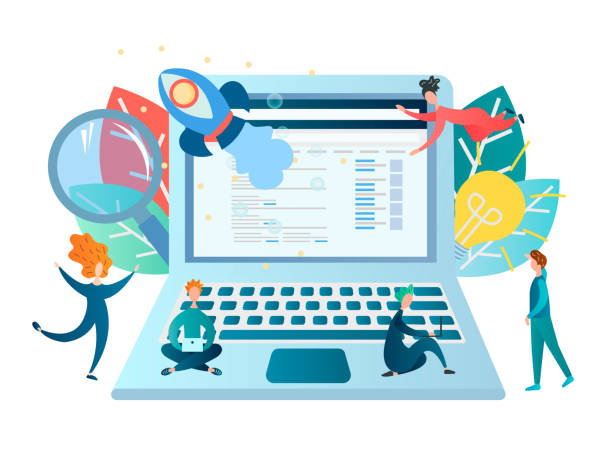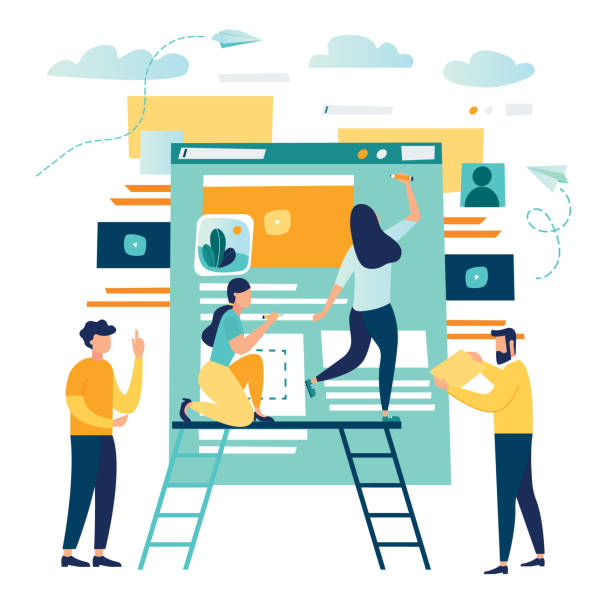An Introduction to Personal Website Design: Why Do We Need It?
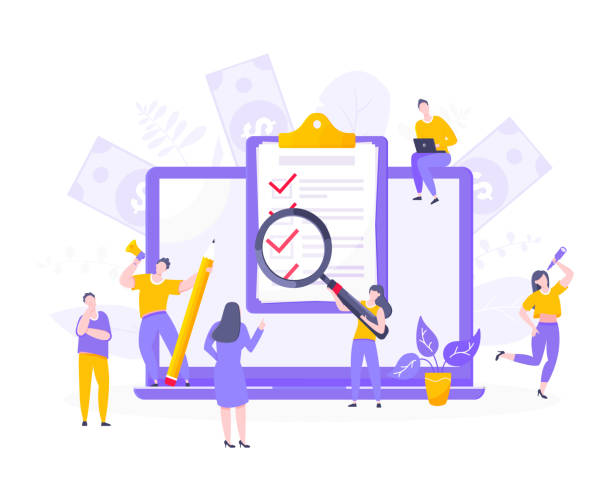
In today’s digital age, having a personal website design has become more important than ever.
It’s a unique space on the internet for you to showcase your online identity.
Whether you are an artist, a writer, a freelancer, or even an ordinary individual who wants to share your knowledge, a personal website offers endless opportunities.
It allows you to have complete control over your personal brand and present information exactly as you wish.
This section provides an explanatory look at the importance and necessity of having a personal website.
By having a personal website, you can share your portfolio, experiences, resume, and even your thoughts with the world.
It’s a platform for networking, attracting clients, or even finding new job opportunities.
Building a personal website helps you establish your credibility and expertise in your field.
This educational process not only enhances your understanding of web technology but also helps you acquire new skills in digital marketing.
The main goal of this article is to provide a comprehensive and practical guide for anyone looking to create a personal online platform.
Are you tired of your e-commerce site having visitors but no sales? RasaWeb solves your main problem with professional e-commerce website design!
✅ Significant increase in sales with targeted design
✅ Seamless user experience for your customers
⚡ Get a free consultation!
Goals and Audience: Defining the Purpose of Your Personal Website Design
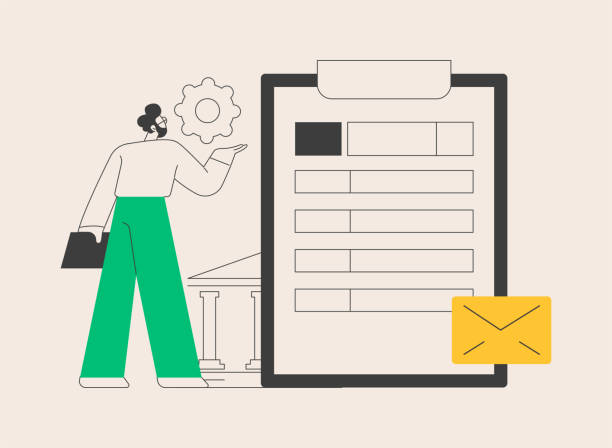
Before starting any personal website design project, it is crucial to clearly define your goals.
Who are you building this website for?
What message do you want to convey?
Is it a portfolio to attract clients or a blog to share knowledge?
This section offers guidance and analysis to help you have a clear vision of your website’s ultimate goal.
Identifying the target audience is the foundation of any successful content strategy.
Are your audiences students, industry professionals, or the general public?
The answers to these questions will influence the design, tone, and content of your website.
A personal web platform should be able to meet the needs of its audience and make the desired information easily accessible.
For example, if your goal is to attract employers, your website should include a resume, portfolio, and testimonials.
If you intend to launch an educational blog, your content should be rich, accurate, and understandable.
A deep understanding of your goals and audience helps you create an effective personal website design that aligns well with your needs and your visitors’ efforts.
This step is of paramount importance as it sets the overall direction of your project.
Choosing the Right Platform: Personal Website Design Platforms and Technologies
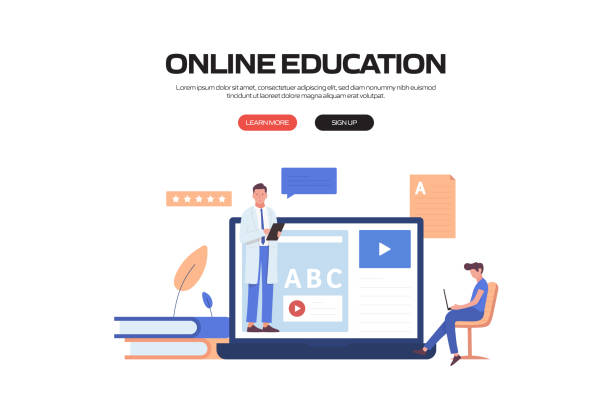
Choosing the right platform for personal website design is one of the key decisions.
There are numerous options, from Content Management Systems (CMS) like WordPress and Joomla to custom coding.
This section specializes in examining the advantages and disadvantages of each and helps you make an informed choice.
WordPress, due to its flexibility, large user community, and numerous plugins, is a popular choice for many.
Joomla is also a powerful CMS with extensive capabilities that is suitable for more complex projects.
For those with coding knowledge, building a custom website using languages like HTML, CSS, and JavaScript allows for complete control over design and functionality.
However, this approach requires more time and skill.
The tables below summarize some common platforms and their features:
| Platform | Advantages | Disadvantages | Suitable for |
|---|---|---|---|
| WordPress | Flexible, many plugins, large community, SEO friendly. | Requires maintenance, potential security vulnerabilities. | Blogs, portfolios, small businesses. |
| Joomla | Powerful, scalable, advanced user management. | More complex than WordPress, steeper learning curve. | More complex websites, enterprise portals. |
| Custom Coding (HTML/CSS/JS) | Full control, optimal performance, unique design. | Time-consuming, requires high technical knowledge, higher costs. | Very specific projects, web developers. |
Also, website builder platforms such as Squarespace and Wix are options for easy personal website design without the need for coding knowledge.
The choice of the right platform depends on your budget, technical skills, and specific goals for personal website development.
Content Strategy: What to Include in Your Personal Website Design?
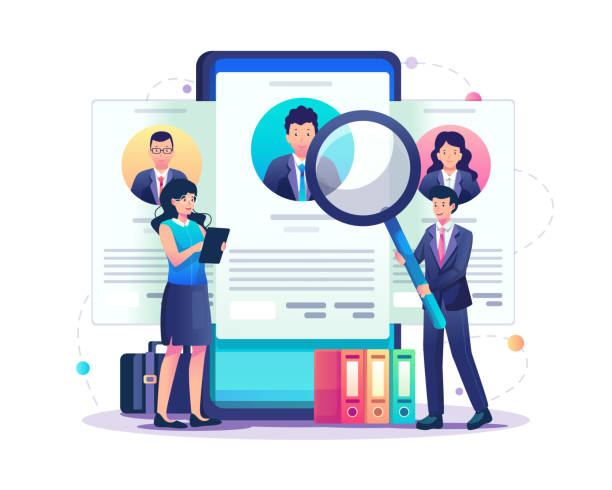
Content is the heart of any personal website.
Deciding what type of content to publish will greatly impact your website’s appeal and effectiveness.
This section helps you create engaging and entertaining content that attracts and retains visitors.
Various types of content can be included on a personal website: blog articles, portfolios, online resumes, image and video galleries, testimonials, and a ‘contact us’ section.
For a blog, choosing topics that are both of interest to you and your audience is crucial.
Your content should be original, high-quality, and relevant to your website’s goals.
Creating a content calendar can help you in planning and maintaining a regular publishing schedule.
For example, you can publish news content about recent events in your industry, or analytical content about new trends.
Remember that content should be both informative and interactive.
Using visual elements such as photos and videos can enhance the attractiveness of your content and improve the user experience.
A successful personal website is one that can continuously provide fresh and valuable content.
Are you tired of your company website not meeting your expectations? With RasaWeb, design a professional website that truly represents your business.
✅ Increase new customer acquisition and sales leads
✅ Boost your brand’s credibility and trust among your audience
⚡ Get a free website design consultation now!
Design Principles and User Experience (UX): Aesthetics and Functionality in Personal Website Design
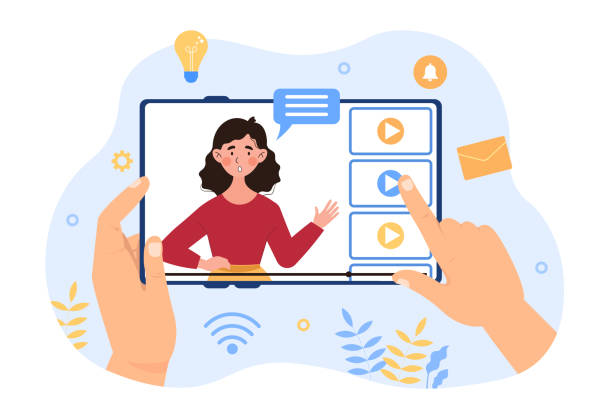
Visual design and user experience (UX) are two fundamental pillars for the success of any personal website design.
A beautiful but unusable website loses visitors.
This section specializes in and explains how to create an attractive and user-friendly website.
Adhering to design principles such as layout, color scheme, typography (font selection), and whitespace is very important.
A clean and organized design helps visitors easily navigate your website and find the information they are looking for.
Excellent user experience includes high loading speed, website responsiveness across different devices (mobile, tablet, desktop), easy navigation, and user-friendly contact forms.
Make sure your website is responsive (Responsive Design), meaning it displays well on any screen size.
Optimizing website images and code for loading speed is another critical aspect of UX.
Today’s visitors do not have the patience to wait for slow-loading pages.
A personal website with good UX not only attracts visitors but also encourages them to stay longer on your website and interact with your content.
Focusing on these principles helps you create a positive user experience for visitors.
SEO for Personal Websites: How to Make Your Website Visible?
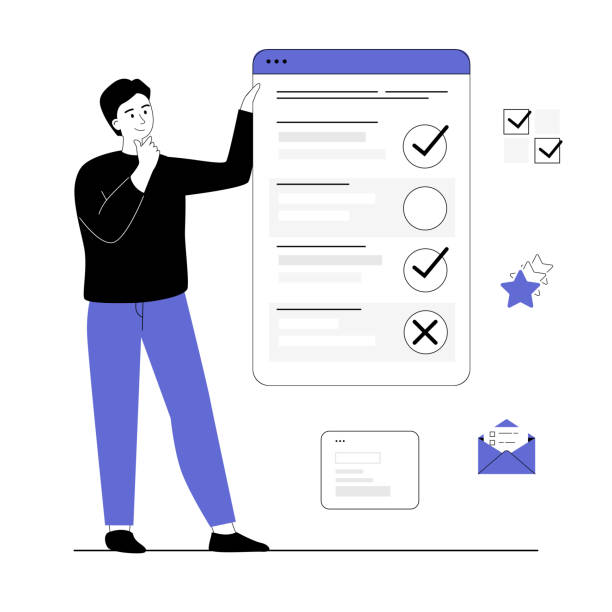
After designing your personal website, the next step is to ensure its visibility.
Search Engine Optimization (SEO) is the process of improving your website’s ranking in Google and other search engine results.
This section is educational and analytical, helping you implement effective SEO strategies for your personal website.
Keyword research is the first step in any SEO strategy.
Find the words your target audience uses to find content similar to your website’s.
Naturally incorporate these keywords into your titles, subheadings, content text, and meta descriptions.
Creating high-quality content relevant to target keywords helps search engines better understand your website.
Building internal and external links (link building) also plays an important role in SEO.
Internal links help with your website’s navigation, and external links to reputable websites increase your website’s credibility.
Technical website optimization including loading speed, mobile compatibility, and URL structure is also essential for SEO.
Tools like Google Analytics and Google Search Console can help you monitor website performance and identify opportunities for SEO improvement.
Remember that SEO is an ongoing process and requires continuous updates and analysis to improve your personal website ranking over time.
Maintenance and Updates: Keep Your Website Fresh and Secure
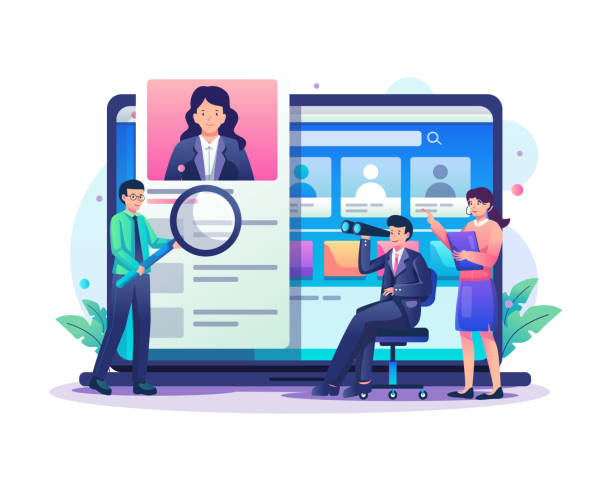
Once your personal website design is complete, regular maintenance and updates are of paramount importance.
This not only ensures website functionality but also maintains its security.
This section provides news and guidance on how to keep your personal website healthy and secure.
One of the most important aspects of maintenance is continually updating your Content Management System (CMS), plugins, and themes.
These updates often include security fixes and performance improvements.
Regular backups of your website data are also vital to ensure your information is not lost in case of any issues.
Backups can be done manually or using automated plugins.
Monitoring website security, including the use of firewalls (Web Application Firewall) and malware scanning, can prevent cyberattacks.
An SSL certificate (HTTPS) is also necessary for encrypting data and increasing user trust.
| Maintenance Activity | Description | Recommended Frequency |
|---|---|---|
| Update CMS and Plugins | Install the latest software versions for security and performance. | Monthly or immediately after updates are released. |
| Data Backup | Save copies of all website files and the database. | Weekly or whenever new content is added. |
| Security Monitoring | Check for malware, vulnerabilities, and intrusion attempts. | Daily or weekly. |
| Check Broken Links | Identify and fix inactive links. | Monthly. |
| Database Optimization | Remove redundant information and optimize database performance. | Quarterly. |
Additionally, regularly checking website performance, including loading speed and user experience, can help you continuously improve.
Proper maintenance and updates ensure the longevity and effectiveness of your personal site.
Monetizing Your Personal Website: Your Financial Opportunities
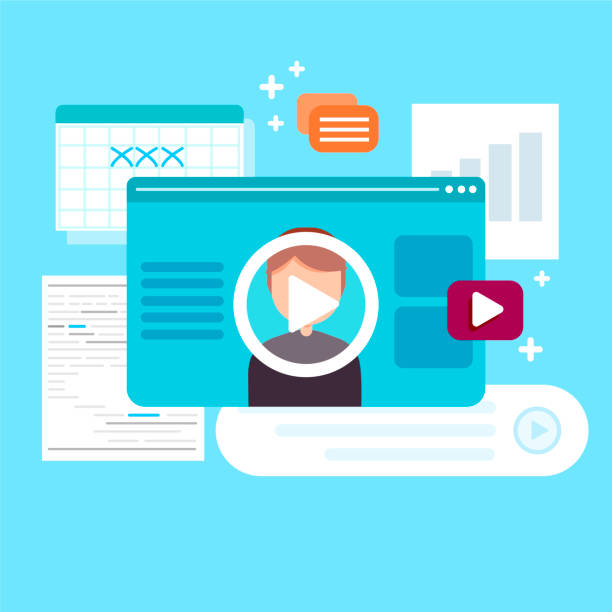
For many, personal website design is not just about showcasing identity or skills, but can also be a source of income.
This section analytically and explanatorily explores various ways you can earn money through your personal website.
One of the most common methods is Affiliate Marketing, where you promote others’ products or services and earn a commission for each sale or click.
Displaying ads through networks like Google AdSense is also a way to monetize your website traffic.
Selling digital products such as e-books, online courses, design templates, and stock photos can also be very profitable.
If you are an artist or content creator, you can sell your work directly through your website.
Offering consulting services, coaching, or freelancing (such as writing, graphic design, or programming) through a personal website is also an excellent way to attract clients and earn income.
Creating premium content or paid subscriptions for exclusive content, podcasts, or videos is another approach.
The key to monetizing a personal site is to provide real value to visitors so they are willing to pay.
Trust and credibility are key to success in this area.
Before starting, carefully plan your business model and ensure it aligns with the main goals of your personal website development.
Are you unhappy with your e-commerce site’s low sales?
RasaWeb is your solution for a professional and high-selling e-commerce site.
✅ Significant increase in sales and revenue
✅ Easy and enjoyable shopping experience for customers
⚡ Get a free consultation from RasaWeb now!
Personal Website Security: Protecting Your Information and Privacy
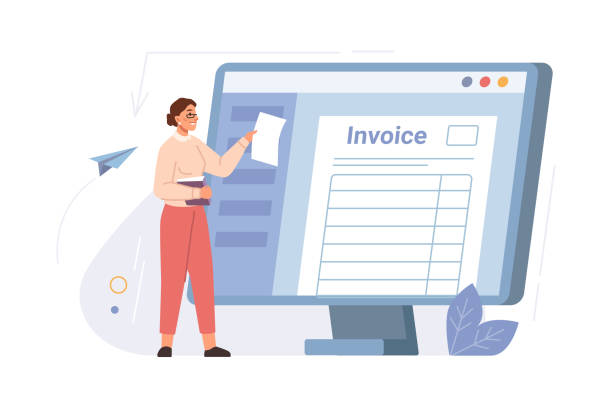
Security is one of the most critical aspects of personal website design that should not be overlooked.
With increasing cyber threats, protecting your website from hackers, malware, and other vulnerabilities is crucial.
This section specializes in and guides you on how to implement the necessary security measures for your personal website.
Using strong and unique passwords for your website’s admin panel and database is the first line of defense.
Activating Two-Factor Authentication (2FA) also provides an additional layer of security.
Installing an SSL/TLS certificate (HTTPS) is not only beneficial for SEO but also encrypts data between the user’s browser and your website, preventing eavesdropping.
Security plugins and tools can help you scan for malware, block suspicious IP addresses, and protect against DDoS attacks.
Regular updates of CMS, plugins, and themes are essential to close known security holes.
Also, choosing a reputable hosting provider with strong security features plays a significant role in your personal website’s security.
Educating website users (if you have multiple users) about best security practices is also important.
Never store sensitive information such as credit card details directly on your personal website unless you use very advanced security protocols.
A secure personal website builds trust with your visitors and protects your data from potential breaches.
Future Trends and Evolution of Personal Website Design: What’s Next?
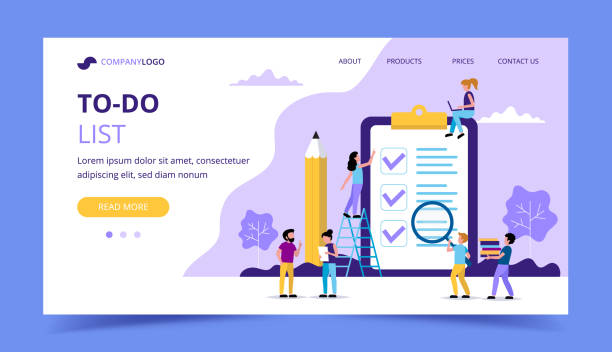
The world of personal website design is constantly changing and evolving.
Familiarity with future trends can help you keep your website up-to-date and prepared for upcoming challenges.
This section provides news and entertaining insights into some of these trends and innovations.
One of the most important trends is the increasing use of Artificial Intelligence (AI) and Machine Learning in web development.
From advanced chatbots for customer support to content personalization based on user behavior, AI plays an increasingly important role.
Voice-based web design (Voice UI) is also growing as the number of users of voice assistants like Alexa and Google Assistant increases.
Virtual Reality (VR) and Augmented Reality (AR) are also slowly making their way into websites, providing more immersive experiences for users.
A greater focus on web sustainability (Green Web Design) and optimizing server energy consumption is also gaining increasing importance.
Minimalist design and the use of subtle animations and micro-interactions will continue to maintain their popularity.
Single-Page Applications (SPA) and Progressive Web Apps (PWAs), which provide an app-like user experience, are also becoming popular.
The emergence of Web 3.0 and blockchain technology can also have profound effects on how we build and interact with websites.
For anyone interested in personal website design, following these trends is essential to ensure their website remains competitive and attractive in the future.
Frequently Asked Questions
| No. | Question | Answer |
|---|---|---|
| 1 | Why should we have a personal website? | A personal website allows you to professionally showcase your resume, portfolio, experiences, and views, strengthening your personal brand. This helps increase career and networking opportunities. |
| 2 | What content should be included in a personal website? | Typically includes “About Me,” “Resume” (skills and experiences), “Portfolio” (projects and achievements), “Blog” (articles and insights), and “Contact Me” sections. Content should be aligned with your website’s purpose. |
| 3 | What is the best platform for building a personal website? | WordPress, due to its high flexibility, numerous themes and plugins, and large user community, is a very popular choice. Platforms like Wix and Squarespace are also suitable for beginners. |
| 4 | What points should be considered in personal website design? | Responsive design (for correct display on mobile and tablet), high loading speed, simple and attractive User Interface (UI) and User Experience (UX), and Search Engine Optimization (SEO) are key points. |
| 5 | How to choose a suitable domain name for a personal website? | It is best for the domain name to be simple, short, memorable, and related to your name or personal brand. Using common extensions like .com, .net, or .ir is recommended. |
| 6 | What is the importance of the Portfolio section on a personal website? | The portfolio section is the strongest tool to showcase your skills and completed projects. This section helps potential employers or clients tangibly see your abilities and have more confidence in you. |
| 7 | Is adding a blog section to a personal website useful? | Yes, a blog allows you to share your expertise through articles and writings, interact with your audience, and improve your site’s ranking in search engines by producing fresh content. |
| 8 | How can a personal website be made to look professional? | Using a clean and modern design, a high-quality and professional profile picture, writing content without spelling and grammatical errors, and ensuring all links and forms function correctly greatly contribute to the website’s professionalism. |
| 9 | What does personal website maintenance and updates include? | Regular content updates, checking link and form functionality, regular data backups, and updating the Content Management System (like WordPress) and plugins are essential for maintaining security and proper functionality. |
| 10 | How much does it cost to design and maintain a personal website? | The cost can vary. It includes domain purchase (around $15-50 per year) and hosting (around $50-200 per year). Using free themes or paying for premium themes and plugins also affects the overall cost. |
And other services of Rasa Web Advertising Agency in the field of advertising
Smart Marketplace: A dedicated service for growth and increased sales based on marketing automation.
Smart Google Ads: Revolutionize online growth with SEO-driven content strategy.
Smart Conversion Rate Optimization: An innovative platform for improving campaign management with Google Ads management.
Smart UI/UX: Designed for businesses seeking customer behavior analysis through key page optimization.
Smart Data Analysis: Transform customer acquisition with custom programming.
And over a hundred other services in the field of internet advertising, advertising consulting, and organizational solutions
Internet Advertising | Advertising Strategy | Advertorials
Sources
Key tips for website personalizationIncrease user engagement with customizationComprehensive guide to WordPress theme customizationImportance of user experience in web design
📢 RasaWeb Afarin Digital Marketing Agency, your reliable partner on the path to online growth!
For more information about our professional services, including WordPress website design, we are ready to take your business to new heights.
📍 Tehran, Mirdamad Street, next to Bank Markazi, Southern Kazeroon Alley, Ramin Alley, No. 6

